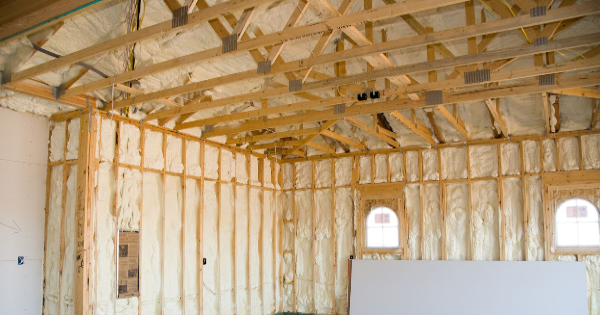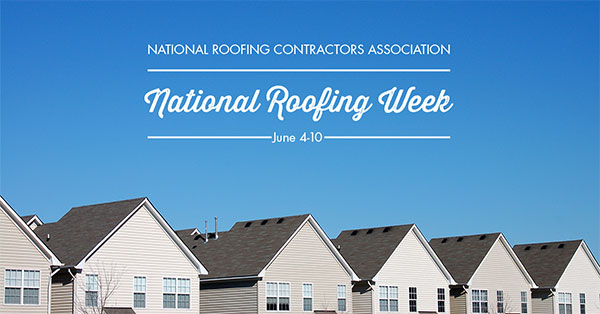Independent Study Confirms Insulation Upgrades are Keys to Significant Energy Savings and Emission Reductions in Existing Buildings

Coalition of trade associations commissioned study that quantifies the benefits of completing insulation retrofit projects across residential, commercial and industrial buildings and underlines the potential impact forward-thinking policies can have on decarbonizing the built environment.
A newly released study by ICF, an international consulting firm with expertise in the energy and energy efficiency sectors, shows that upgrading building envelope insulation leads to substantial energy savings and carbon emission reductions. ICF was tasked with quantifying the lifetime energy savings, economic benefits and carbon emission reductions that can be achieved with insulation improvements to existing single-family homes, commercial buildings and industrial facilities. The study’s findings underscore insulation’s enormous potential to help each corner of the country meet building performance standards and carbon reduction goals.
“This study illustrates that by implementing simple, cost-effective insulation upgrades in the residential, commercial and industrial sectors, policymakers can make significant strides towards reducing energy use and the building industry’s carbon footprint,” said Michael Kwart, Insulation Contractors Association of America (ICAA) Executive Director.
Key findings from the independent study include:
Residential buildings
The study assessed the state- and national-level energy and emissions savings benefits as well as the economic benefits that could accrue over 50-years as a result of the implementation of code-compliant insulation retrofits.
Key findings:
- Energy savings ranging from 10 to 45 percent can be achieved in existing homes that are air sealed and have insulation added in the ceiling and floors (and walls in very limited circumstances) to levels prescribed by the 2021 International Energy Conservation Code.
- Nationally, this retrofit activity could yield roughly 10 billion tons of carbon emission reductions over a 50-year period—the assumed useful life of building insulation. This is equivalent to eliminating over 25,000 natural gas-fired electrical generation power plants for a year, the annual energy use of over 1 billion homes, or operating almost 3 million wind turbines over a year.
“Both the Infrastructure Investment and Jobs Act and the Inflation Reduction Act, passed in the past year, allocate billions of dollars in investments to improve the energy efficiency of our existing building stock,” said Curt Rich, President and CEO of the North American Insulation Manufacturers Association (NAIMA). “As government and business begin to tap into this transformational level of funding, they should pay close attention to the showstopping carbon reductions and consumer savings that can be realized by focusing on upgrading tried-and-true measures like insulation and air sealing.”
Commercial buildings
The study assessed the impact commercial roof and pipe insulation retrofits would have on state- and national-level energy use, energy costs and carbon emissions on an annual basis and over a projected 30-year service life. ICF analyzed a range of commercial buildings, including schools, small to midsize office buildings, midrise apartments and stand-alone retail.
Key findings:
- Insulation upgrades reduce energy use in primary schools by an average of nearly 9 percent and secondary schools would save an average of more than 7 percent.
- Upgrading roof and pipe insulation in just 25 percent of existing commercial building floor space in the U.S. would save more than 700 therms of natural gas each year, or the equivalent of having 800,000 fewer gasoline-powered passenger vehicles on the road.
- Over a 30-year service life of these insulation upgrades, cumulative CO2 equivalent emissions savings reach nearly 360 million metric tons. This is equivalent to the annual energy use of more than 45 million American households.
“With building operations accounting for approximately 30 percent of annual, economy-wide greenhouse gas emissions in the United States, installing air sealing and insulation products is the first, best step toward decarbonizing our built environment,” said Justin Koscher, President of the Polyisocyanurate Insulation Manufacturers Association (PIMA). “The study is a call to action for federal, state and local leaders to focus on policies that drive improvements in building insulation levels; in turn, enhancing the performance of the buildings we live, work and learn in each day.”
Industrial buildings
The study assessed the state- and national-level energy and emissions impacts as well as the economic benefits that could accrue over a 20-year horizon from the installation of code-compliant steam pipe insulation in a select number of manufacturing sectors.
Key findings:
- Making pipe and mechanical insulation improvements to industrial facilities in eight major industrial sectors (Chemical, Food, Paper, Petroleum and Coal Products, Primary Meals, Nonmetallic Mineral Product, Transportation Equipment, and Plastics and Rubber Products) would save these sectors more than $126 billion in energy costs based on an average capital cost of $3.77 billion. The average payback on this investment is about one year. For many industrial sectors, the payback is as little as six months.
- Energy savings from insulation upgrades can reduce natural gas use by 118 billion therms across the U.S. industrial sector and help reduce demand on the electric grid as electrification technologies roll out.
“Our time is now—the power of the data is undeniable. These incredible payback numbers—in as little as 6 months—along with the enormous energy and carbon savings surely make the business case to think insulation first when industrial facilities assess their priorities for energy efficiency technologies,” said Michele M. Jones, EVP/CEO of the National Insulation Association (NIA). “Our industry is well positioned to help the Department of Energy (DOE) and industry meet these aggressive emission reduction goals.”
To view the executive summary of the study findings, visit InsulationAdvocacy.org.
Note: The study was commissioned by the North American Insulation Manufacturers Association, the Insulation Contractors Association of America, the National Insulation Association, the American Chemistry Council (Plastics Division) and the Polyisocyanurate Insulation Manufacturers Association.























Comments
Leave a Reply
Have an account? Login to leave a comment!
Sign In